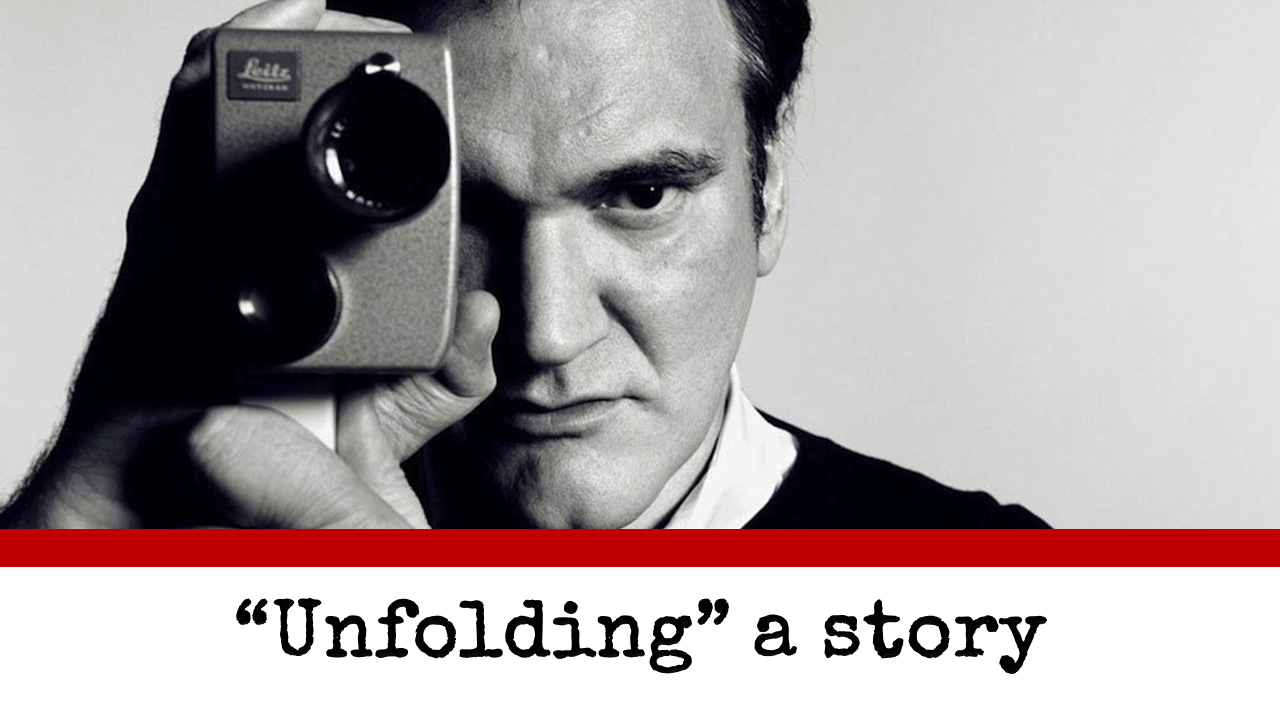I was watching a 1994 interview with Quentin Tarantino the other day and he said something that I couldn’t get out of my head: “A story is something that constantly unfolds. And I’m not talking about like this quick left turn or a quick right turn or a big surprise. I’m talking about it unfolds.” In the interview, a young Tarantino accused Hollywood movies of telling “situations” over telling stories.
I dug more into the interview and the reactions to it, and in this circumstance the director was defending the non-linear method of storytelling in film. If you’ve ever seen any of Tarantino’s great works, (Reservoir Dogs springs to mind), then you’ll understand the appeal. By skipping through different character views, locations and time periods, Tarantino allows the audience to quickly put things together, to build up and idea of what’s “really” going on. This leads to great moments where the audience, now armed with more knowledge than the characters, can shout and gasp and yell at the screen as the plot reaches the climax.
For those who have joined me on this page before, you know I love this type of non-linear story, particularly from the late great James Tiptree Jnr, aka Alice Sheldon. Check out her short story “Your Faces, O My Sisters! Your Faces Filled of Light!” However, that doesn’t mean that non-linear stories get all the fun…
So how do we make a traditional, linear story “unfold” as opposed to just being a series of “situations”?
The first part is consistent relationships that build off each other as the story progresses. The easiest way to do this is by having your character explore outwards in a consistent, breathing world, one that starts by foreshadowing what is over the mysterious horizons before letting the protagonist venture forth. Think of Pratchett’s Bromeliads trilogy, that starts with gnomes in a muddy hole but uses the plot hook of “The Thing,” a tiny ancient computer, to wind up our characters and eventually send them off into space. The reader gets to enjoy watching those horizons expand as Masklin and his friends become more capable and adventurous.
The other way to do this is with character relationships. This is the logic behind the “bottle” movies or television shows, where the plot revolves around a group of characters slowly uncovering their twisted relationships and revealing their underlying motives. An old example but a good one is the 80s hit “The Breakfast Club,” where the inner turmoil of the teens involved is hinted at then slowly drawn out as the emotions in the room begin to rise.
The second part is to make sure your reveals, whether character or setting, are always done with a purpose in mind. Never let your tension resolve without some kind of payoff – the action that will make your reader gasp or cry or pump their fists in triumph. Most importantly, these reveals should always hint at the final climax or your story, and the ultimate payoff.
Have an example you’d like to share? Please leave a like or a comment below!

Leave a Reply